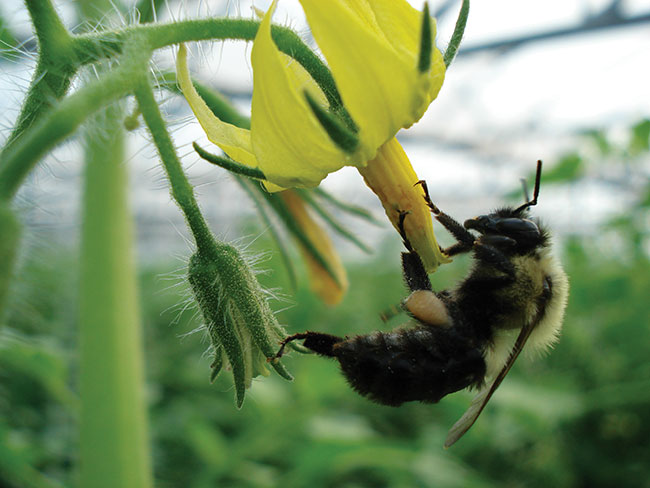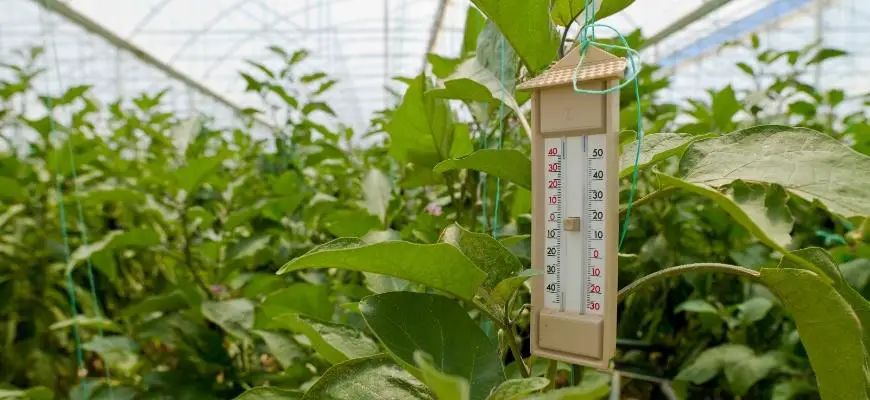Call us at 725-239-9966!
M-F: 8 AM-7 PM PST
Call us at 725-239-9966!
M-F: 8 AM-7 PM PST

Growing plants in a greenhouse provides many advantages like protection from harsh weather and control over growing conditions. However, the enclosed environment also eliminates natural pollinators that are essential for fertilization and fruit production. Therefore, greenhouse gardening requires creative solutions to ensure successful pollination.
This comprehensive guide will provide greenhouse growers with techniques and strategies to pollinate plants inside a greenhouse. Whether you want to pollinate vegetables like tomatoes and cucumbers or fruit trees and ornamentals, this article covers various methods, tools, and best practices to implement in your greenhouse.
Pollination is crucial for greenhouse plants to produce fruits, vegetables, and seeds. Natural pollinators like bees have limited access indoors.
Manual pollination involves hand-transferring pollen between flowers using tools like paintbrushes. It ensures fertilization but is time-consuming.
Bumblebees are efficient greenhouse pollinators. Hives can be installed to provide thorough, vibratory "buzz pollination".
Mechanical devices like electric wands imitate pollinators. They efficiently distribute pollen for large operations.
Diligent daily pollination during flowering ensures continual fertilization. Tracking and troubleshooting issues maintains optimal yields.

Pollination occurs when pollen grains are transferred from the male part of a flower (stamen) to the female part of a flower (pistil). This transfer of pollen allows fertilization to occur and enables the plant to develop seeds and fruit.
While some plant species are self-pollinating, most plants rely on pollinators like bees, bats, birds, and butterflies to carry pollen from one flower to another.
When growing plants in an enclosed greenhouse environment, natural pollinators have limited access. Indoor conditions like low humidity and inadequate air circulation can also inhibit pollen dispersal.
Without successful pollination and fertilization, plants will not produce fruit or seed. For greenhouse owners interested in harvesting vegetables, fruits, seeds, or flowers, ensuring adequate pollination is essential.
Some key reasons greenhouse plants need assisted pollination include:
When growing in a greenhouse, the two main options for achieving pollination are natural methods and assisted pollination.
Taking advantage of whatever natural pollinators are able to access the greenhouse is the most hands-off approach.
Attracting natural pollinators is a chemical-free way to improve greenhouse pollination. Native bees, flies, beetles, and other insects may enter through vents and cracks. Support populations by:
Grow pollen and nectar plants inside and around the greenhouse to feed pollinators. Good options include:
With a pollinator-friendly setup, you can increase natural greenhouse pollination free of cost.
However, relying solely on natural pollination is often inadequate for greenhouse growth. You'll have to find other methods for pollinating in a greenhouse.
To ensure effective pollination in a greenhouse, most growers need to implement assisted pollination techniques. Common options include:
Also called “hand pollination”, this method involves manually transferring pollen from the male to female flower parts using tools.
For plants like tomatoes, cucumbers, peppers, and squash, the process involves:
Tools used for manual pollination include:
Manual pollination is highly effective but requires diligently pollinating every flower as it opens. It can be time-consuming for larger greenhouse grows.
Bees are extremely efficient greenhouse pollinators. Bumblebees are most commonly used, as they can thrive year-round in enclosed environments.
Key benefits of bumblebee pollination include:
Bumblebee hives can be purchased and installed in greenhouses to supplement natural populations. For best results:
With proper installation and care, bumblebees offer an efficient pollination solution.
Battery-powered tools like vibrators, dusters, or blowers can be used to dislodge and distribute pollen in enclosed areas.
Popular options include:
Though more expensive, these device pollination increase efficiency and are useful for larger operations.
For the best results, pollinate at the ideal time:

Once you’ve selected a suitable pollination method(s), following these steps will help maximize successful fertilization:
Make any adjustments needed to facilitate pollination:
Note which plants have been manually pollinated or bee/device pollinated each day.
Check for newly opened female flowers each day. Pollinate all new blossoms following the methods used.
Proper technique and diligent repetition will result in thorough greenhouse pollination!

Achieving successful initial pollination is just the first step. Ensuring adequate pollination continues throughout the growing season involves:
Tracking pollination rates - Note the number of resulting fruits/seeds from each plant. Decreasing yields indicate a need for better pollination.
Troubleshooting issues - If yields drop, inspect flowers and pollinators to identify problems. Address pesticide use, hive health, environmental factors, etc.
Sustaining pollinators - Keep bees, bats, etc. healthy and consistently accessing flowers. Continue attracting natural pollinators by meeting their habitat needs.
Adjusting methods - Switch pollination techniques if improved fertilization is needed. Add supplemental bee hives, employ mechanical tools, or start manual pollination.
With attentive management and adaptability, optimal greenhouse pollination is achievable long-term.
| Factor | Ideal Pollination Range |
|---|---|
| Temperature | 65°F to 85°F |
| Humidity | 40% to 60% |
| Airflow | Fans of vents for air movement but not strong winds |
| Light | Bright, sunny conditions |
Fruits, vegetables, and ornamentals grown in a greenhouse require successful pollination to reach their full potential. The advantages proper pollination provides include:
Careful attention to greenhouse pollination pays dividends for growers seeking the best quantity and quality from each crop!
:strip_icc()/How-To-Pollinate-Tomatoes-By-Hand-1340043950-f5b74f9b83844a21bf169066d53c86c6.jpg)
Pollination inside a greenhouse requires some extra effort, but the rewards are plentiful. Assisted pollination ensures plants can achieve complete fertilization and reap the ensuing benefits.
While pollinating within an artificial environment presents challenges, the solutions outlined above provide a roadmap to get the desired results. With deliberate techniques, an attentive process, and adaptive management, greenhouse owners can achieve successful pollination allowing their plants to fully flourish.
For those looking to set up a new greenhouse, be sure to review our comprehensive greenhouse buyer's guide to help select the right structures and equipment to facilitate excellent growing conditions and pollination. With the proper setup and these pollination best practices, your greenhouse plants will thrive!
Pollination in a greenhouse can present several challenges. One common issue is controlling temperature and humidity which are crucial for proper pollination. Unfavorable conditions can restrict the action of bees and other pollinators. Also, pollination may become difficult for plants hidden inside the greenhouse, out of reach of pollinators from outside the greenhouse.
Not all plants in your greenhouse need pollination. Some plants are self-pollinating plants and can produce fruit or seeds without the need for pollinators. However, plants that rely on the transfer of pollen for fruit sets will require pollination, and bees play an essential role in this process. Pollination ensures the production and health of such plants.
When it comes to greenhouse pollination, they are considered much more efficient than other bees. In contrast to honey bees, they are not distracted by outside sources of nectar and pollen, leading to an increase in pollination activity within the greenhouse. Bumble bee pollination is especially beneficial for plants like tomatoes that require a particular way of pollination.
Regardless of size, you can adequately pollinate plants in a greenhouse. In a small greenhouse, manual pollination might be easier due to the limited space. However, in a larger setup, attracting natural pollinators or using a pollination device may be more efficient. Also, controlling the airflow becomes more important in a larger greenhouse for pollination.

{"one"=>"Select 2 or 3 items to compare", "other"=>"{{ count }} of 3 items selected"}
Leave a comment